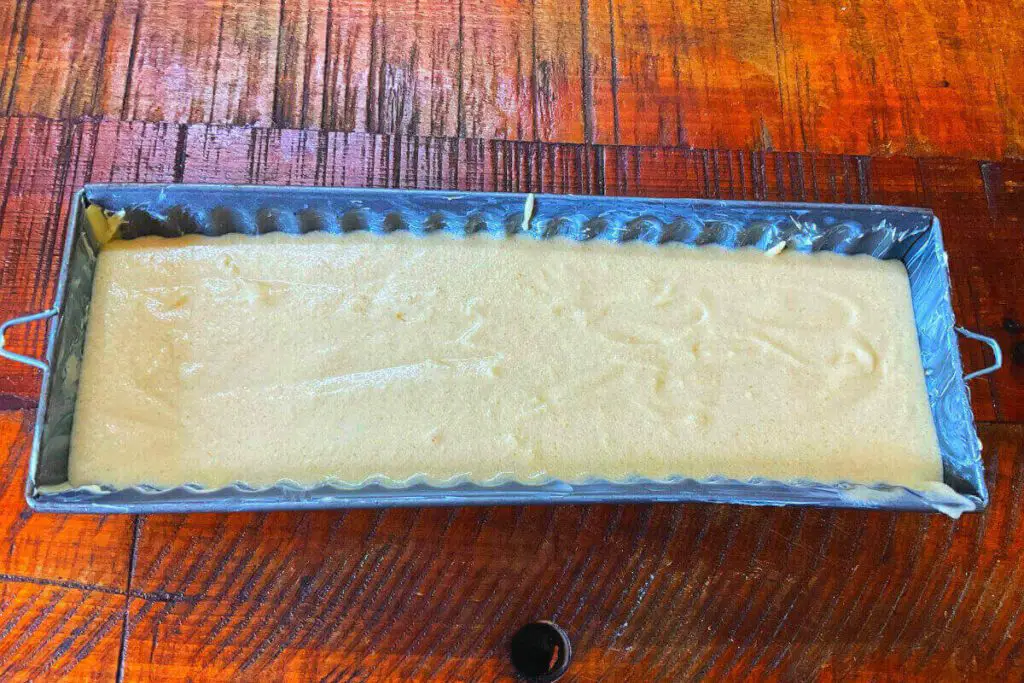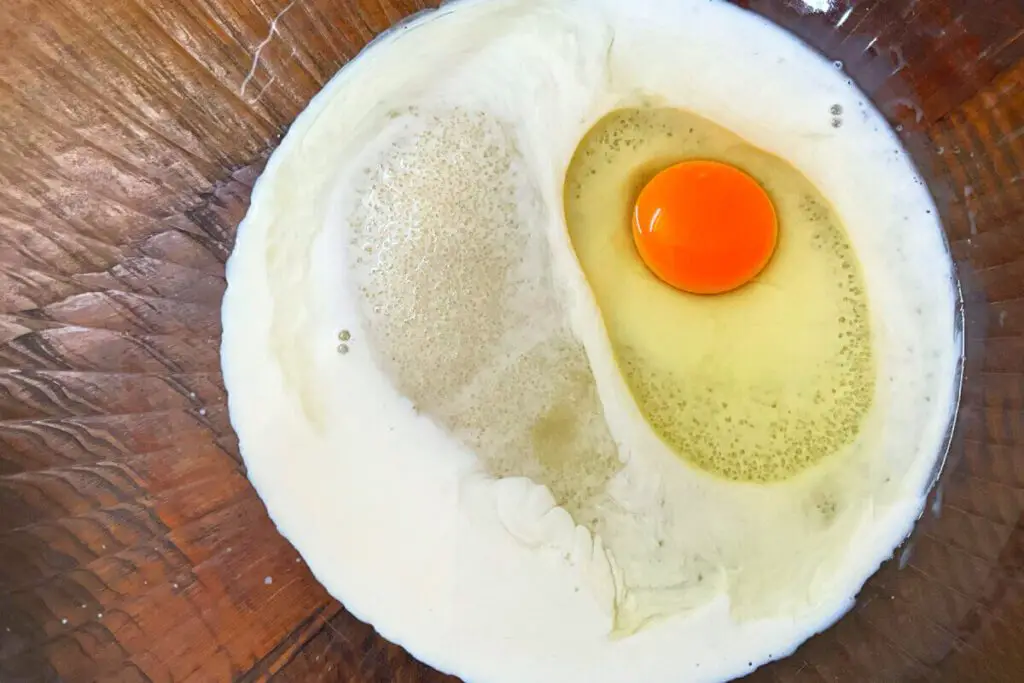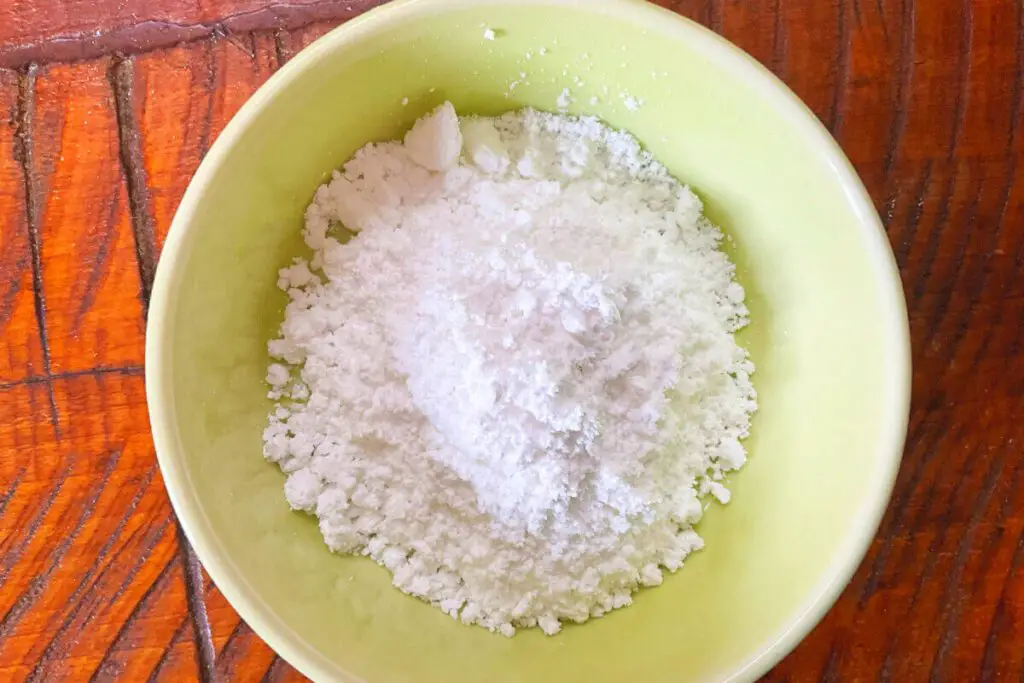This Swedish almond cake has long been my family’s favorite recipe. We would eat the cake with some cream and fresh berries each summer.
The simplicity of the Swedish almond cake recipe is truly remarkable. With just a handful of essential ingredients, this cake delivers many flavors. It’s fascinating how many Swedish and Scandinavian baked goods have an unmistakable almond taste, considering that almonds are not traditionally grown in Sweden or the broader Scandinavian region.
Table of Contents
- History Of Almonds And Scandinavia Explored
- About Making The Swedish Almond Cake
- Swedish Almond Cake Recipe
History Of Almonds And Scandinavia Explored
The history of almonds is a fascinating journey that spans centuries and continents. While almonds are not native to Scandinavia, they have found their way into the heart of Swedish cuisine and have become an integral part of the country’s baking traditions. Although the exact origins of almonds in Swedish cooking remain elusive, exploring the broader history of this versatile nut helps shed light on its popularity and significance.
Almonds have a rich historical presence, with mentions dating back to ancient times. In Greek mythology, almonds were associated with fertility and were considered a symbol of new beginnings. In the Bible, the Book of Numbers tells the story of Aaron’s rod, which blossomed and bore almonds, further emphasizing their symbolism of life and abundance.
Around 100 AD, almonds were used as a fertility charm for newlyweds during the Roman Empire. It was customary to shower them with almonds, similar to the modern tradition of giving sugared almonds in North America. This practice highlights the enduring cultural significance of almonds as a symbol of good fortune and prosperity.
6th And 7th Centuries Almond Trees Thrived In Parts Of Europe
Between the 6th and 7th centuries AD, almond trees thrived in regions such as Spain, Morocco, Greece, and Israel. These areas became hubs for almond cultivation, and their harvests played a vital role in sustaining explorers traveling along the Silk Road to China. Spain, in particular, emerged as a significant producer of almonds and has maintained a robust almond industry to this day.
We know many explorers would travel and bring food from their faraway lands and explorations.
It is plausible that during this period, explorers and traders disseminated almond nuts throughout Europe, including Scandinavia. The almond’s versatility and nutritional value likely contributed to its adoption in various culinary traditions.
In the 18th century, Franciscan padres introduced almond trees from Spain to California. However, the region’s moist and cool weather initially posed challenges to successful cultivation. It wasn’t until the following century that almond cultivation thrived in California, eventually becoming one of the state’s most significant agricultural industries.
In 1890 Vincent Van Gogh Painted His Beloved Almond Blossom
Art has also immortalized the beauty and allure of almonds. In the late 19th century, renowned artist Vincent van Gogh painted his iconic “Almond Blossoms” series while residing in Arles and Saint-Rémy in Southern France. These captivating paintings showcase almond trees in full bloom and remain cherished masterpieces in the art world.
Although almonds’ exact path to reach Sweden and Scandinavia may remain unknown, the broader historical context allows us to appreciate their cultural significance. Almonds have transcended borders, capturing people’s hearts and taste buds worldwide.
Today, they play a prominent role in Swedish baking, adding a delightful flavor and texture to traditional Scandinavian recipes.
Incorporating almonds into Scandinavian cooking demonstrates how culinary traditions evolve and adapt over time, assimilating ingredients from distant lands to create unique and delicious dishes. As we savor the almond-infused delights of Swedish cuisine, we can reflect on the fascinating history of almonds and appreciate their enduring legacy in our culinary heritage.
About Making The Swedish Almond Cake

When preparing the Swedish Almond Cake, there are a few helpful tips to remember. This cake is wonderfully easy to make, and following these simple suggestions will make the process even smoother.

Special Almond Cake Pan

While a special pan is designed for Swedish almond cakes, it is not essential for achieving the same delicious taste. You can easily find the pan online or at a Swedish store, but if you don’t have one, don’t worry—the cake will turn out as delightful in a regular cake pan.
Pan Preparation
We suggest spraying the pan with cooking spray to ensure the cake releases easily from the pan. Alternatively, you can butter the pan thoroughly and coat every nook and cranny.

Almond Extract
Since the almond flavor is the star of this cake, we recommend using a high-quality almond extract. One brand we particularly appreciate is Penzey. The use of good-quality almond extract will enhance the overall taste and aroma of the cake.
Listen To Our Podcast About A Taste Of Sweden – Anita’s Authentic Swedish Almond Cake Recipe below or by clicking here.

Beat Sugar, Egg, Milk, And Extract

Begin by beating the sugar, egg, milk, and almond extract together. This step allows these ingredients to blend harmoniously, ensuring a well-mixed batter.
Variation
Add sliced almonds to the bottom of the pan for a delightful variation before pouring in the batter. As the cake bakes, the almonds will rise to the top, creating a beautiful and crunchy almond topping when the cake is flipped out of the pan.
Serving Options
This cake can be enjoyed on its own as a delightful treat. Alternatively, you can serve it with a dollop of cream and fresh fruit, adding an extra layer of indulgence and flavor.
Also, add powdered sugar on top of the cake. Some people will add a dressing, but we like to add powdered sugar.

Considering these suggestions, you’ll be well-equipped to create a delicious Swedish Almond Cake that will impress you. Enjoy the process and savor the delightful results!

